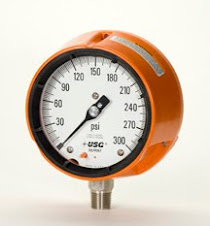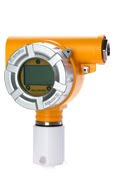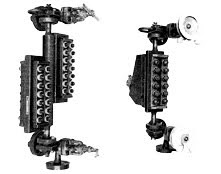
The New CDA‐22 Chlorine Dioxide Analyzer added to the family of
ECD Analyzers ‐ drinking water, rinse water, cooling water, & fresh water applications
The CDA-22 is a panel mounted,
ready to use Chlorine Dioxide
Analyzer. It is designed to monitor
chlorine dioxide in drinking water,
rinse water, cooling water or other
fresh water samples from 0.05 – 20
ppm ClO2. The CDA-22 features a
plug and play design that incorporates
a flow control device, a chlorine
dioxide sensor and the C22 analyzer/
controller conveniently mounted on a
PVC panel. Connect the sample and
drain lines, connect the power and
outputs and it is ready to use.
Calibration is accomplished by DPD
comparison.
Chlorine Dioxide (ClO2) exists as a
gas in solution, it does not dissolved
like other chlorine compounds and is
therefore not affected by the pH of the
solution. ClO2 is approximately 10
times more soluble than chlorine in
water but it is extremely volatile and
can be easily removed from dilute
aqueous solutions with minimal
aeration. Chlorine Dioxide diffuses
through the PTFE membrane of the
sensor and is reduced to chloride ion
by the addition of electrons from the
cathode. Silver from the anode is then
oxidized to silver chloride. The
electrons released from the gold
cathode and the electrons accepted
on the silver anode result in a current
flow which is proportional to the
chlorine dioxide concentration in the
medium. Temperature affects the
ClO2 permeability membrane,
increasing the temperature increases
the output of the sensor about 4%/oC.
The chlorine flow cell includes a
temperature sensor that allows the
C22 analyzer to perform automatic
temperature compensation of the
measurement. Amperometric chlorine
sensors are flow sensitive, the
minimum required flow by the sensor
is 0.5 ft/sec, above this value the
output is virtually flow independent. A
“Constant head” Flow control Device
(CFD) maintains the optimum flow by
the sensor over a wide range of
incoming sample flow rates. The
minimum flow required for the CFD is
10 gal/hr and the maximum flow is 80
gal/hr with the sample going to drain
at atmospheric pressure.
http://www.ecdi.com/products/chlorine_analyzers.html






















